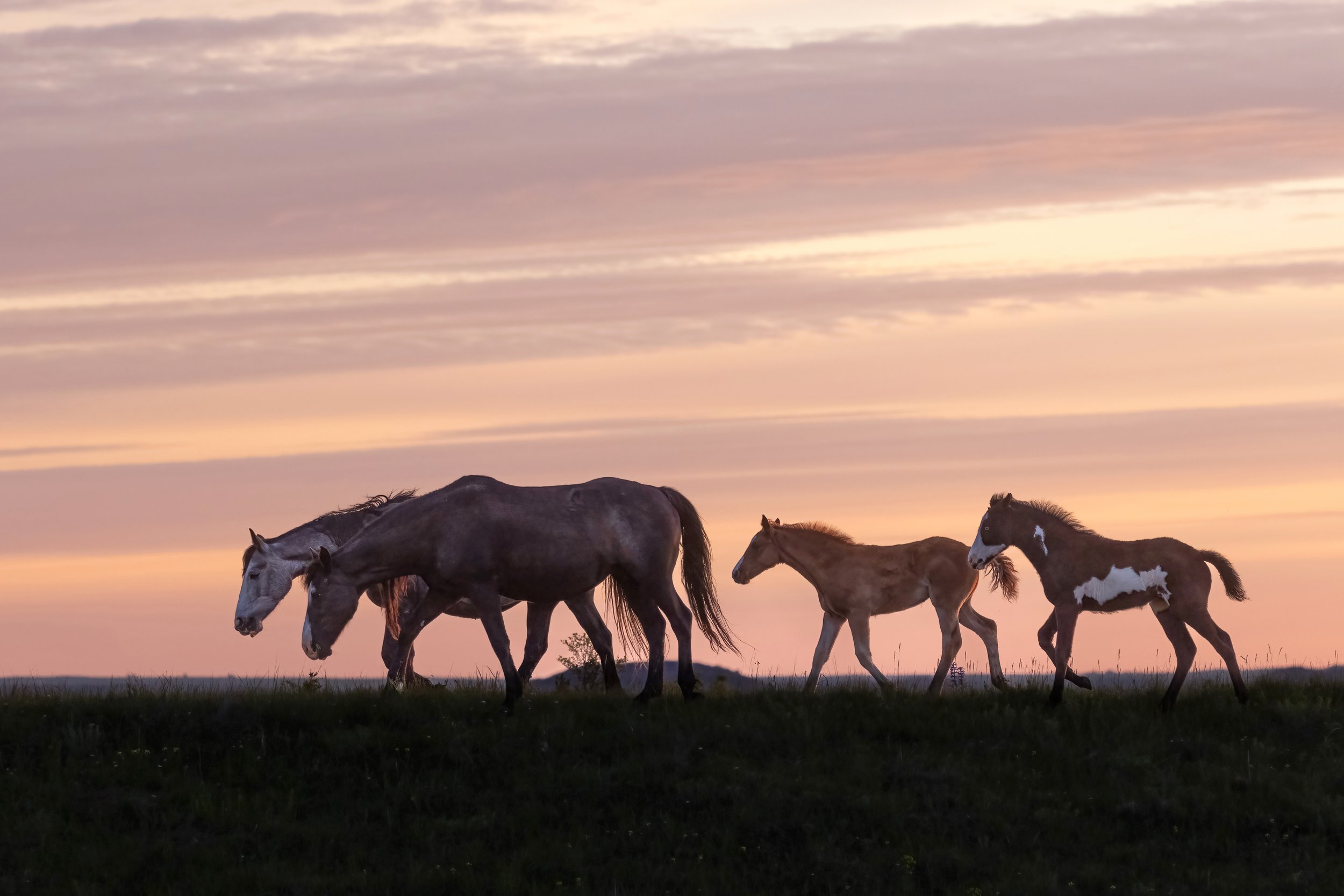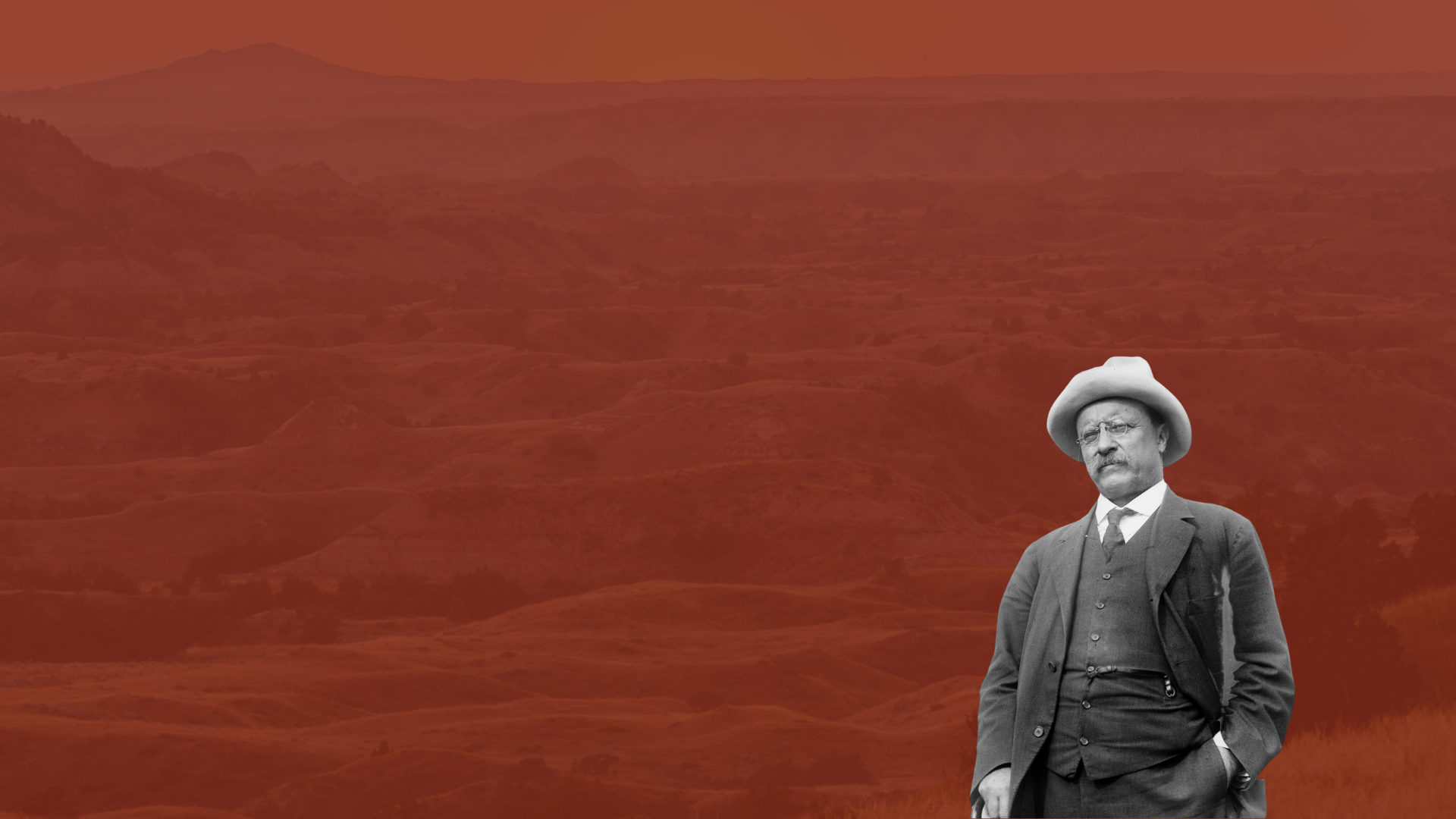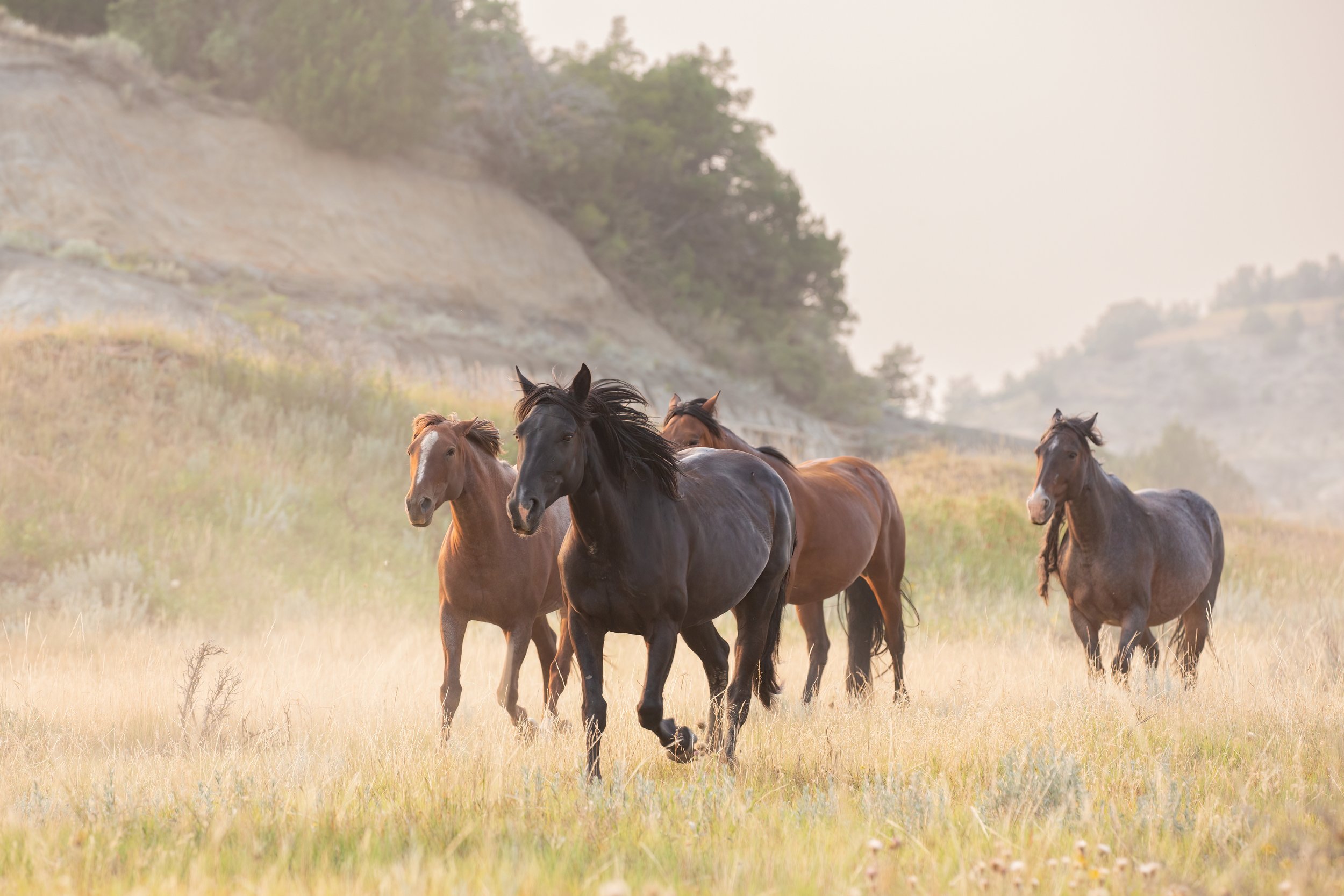
SAVE THE TEDDY ROOSEVELT WILD HORSES
about
The Theodore Roosevelt horses have roamed the badlands for centuries, and many believe they are descendants of Sitting Bull’s horses and related to the rare Nokota breed. Currently, just 180 wild horses roam the badlands of Theodore Roosevelt National Park. But the National Park Service is considering plans that could bring that number down to an unsustainable 35 to 60 horses, or eliminate the herd entirely.
-
In March 2022, the National Park Service asked for the public’s input in developing a “Livestock Plan” for the wild horse and cattle herds that have called the Teddy Roosevelt National Park (TRNP) in North Dakota home for centuries.
Previous to the announcement of this plan, the horses had been managed by a 45-year-old Environmental Assessment. In December, the agency released three alternatives for analysis and public comment with an emphasis on its preferred plan to remove all wild horses from the Park in a phased approach.
At the end of January 2023, Governor Burgum sent a letter to Park Superintendent Angie Richman stating that removing or reducing the horse population would, “strike a blow not only to park visitation but also the economic vitality of Medora, nearby communities including Dickinson, and [the] entire state.” He further urged officials to, “find a way to manage the horses in a manner and herd size that supports genetic diversity and protects the environmental integrity and capacity of the park for current and future generations of visitors.”
After being contacted by local group, Chasing Horses Wild Horse Advocates, local media spoke out against the NPS plan to remove the wild horses from the Park, and visitors to the TRNP from all over the country also joined in.
In March 2023, the state legislature passed SCR4014, a resolution that urges the NPS to preserve the wild horses and longhorn steer residing within the TRNP. While this does not mean the horses are protected from removal, it does bolster the support for keeping them in the Park.
In September 2023, the NPS released its draft assessment. As in its December 2022 Scoping Notice, the NPS has presented three Action Alternatives “related to livestock and nonnative and exotic species within parks” in this Draft EA.
-
Thousands of people weighed in and the NPS is now taking the public feedback to develop Final Alternatives and Environmental Assessment which was released in the Fall of 2023.
-
Please visit our Action Center for timely ways you can take action right now.
in-depth
The National Park Service (NPS) is currently seeking public input on the Draft Environmental Assessment for a Livestock Plan for the wild horses of Theodore Roosevelt National Park (TRNP). Unfortunately, the plan is on track to eliminate North Dakota's only wild horse herd.
The TRNP's approximately 195 horses are managed by a 1978 Environmental Assessment. While a new management plan is necessary, the EA is unacceptable as it proposes three alternatives that would lead to the destruction of the Theodore Roosevelt wild horses.
The alternatives are limiting the herd to an unsustainable 35-60 wild horses that would require the removal of about 150 horses; expediting the herd's reduction to zero wild horses; and reducing the herd to no wild horses via a phased approach. All three alternatives would require the dangerous use of helicopters to round up and remove these historic horses.
The NPS would give Tribal Nations the first opportunity to take captured horses and then auction off the remaining horses on a government website. Any horses the agency is unable to sell would be euthanized.
Although wild horses are a reintroduced native species, the NPS classifies them as "livestock" even though they have roamed the badlands for centuries, and the agency provides no care for them. The horses fend for themselves alongside bison, elk, and other wildlife. In addition, the NPS refers to them as a nonnative species despite scientific evidence suggesting otherwise. Also driving the removal of the wild horses is the Park's "need" to align management of its bison herd with Secretarial Order 3410 which is a Department of the Interior's initiative to restore wild and healthy populations of American bison and the prairie grassland ecosystem.
Currently, about 600 bison live in the TRNP with the wild horses; unlike the bison, the NPS does not consider the horses to be a native species and part of the native prairie ecosystem.
During the scoping period, 19,000 public comments were submitted, with the majority requesting the NPS maintain a genetically viable herd of at least 150 horses in the TRNP. The North Dakota Governor, Doug Burgum, North Dakota State Legislation, and other nonprofit organizations have offered resources to help the NPS maintain the wild horse herd at this level. The NPS, however, dismissed an alternative that would allow for a minimum of 150 horses in the herd to maintain genetic diversity.
The Theodore Roosevelt wild horses need a better solution. Moving forward, the NPS must adopt a management plan that uses current science and herd data to maintain a healthy breeding population of at least 150 horses while maintaining vital bloodlines.
The NPS should also implement a fertility control program with PZP, which has a 40-year history of being reversible and safe even for pregnant mares, rather than using GonaCon. The Theodore Roosevelt wild horses are an essential part of the park and state's historical and natural heritage, and they're a significant tourist attraction for North Dakota.
Many historians believe they are descendants of Sitting Bull's horses and related to the rare Nokota breed.

Here is your country. Cherish these natural wonders, cherish the natural resources, cherish the history and romance as a sacred heritage, for your children and your children's children. Do not let selfish men or greedy interests skin your country of its beauty, its riches, or its romance.
THEODORE ROOSEVELT
get involved
Important ways to take action, stay up-to-date on the latest, and learn how you can support the efforts to ensure the Teddy Roosevelt wild horses stay wild for generations to come.




